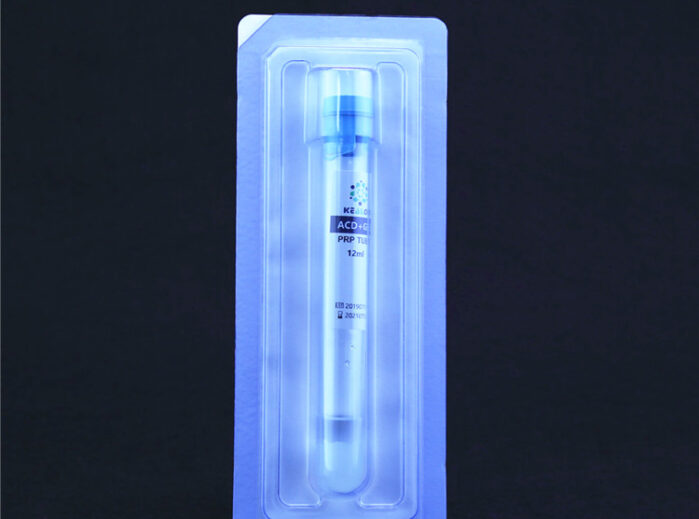Disposable and reusable Platelet Rich Plasma (PRP) kits each have their own set of advantages and disadvantages, and the choice between the two largely depends on factors such as cost, convenience, and sustainability. Here’s a comparison of the advantages and disadvantages of disposable PRP kits compared to reusable ones:
Advantages of Disposable PRP Kits:
- Sterility: Disposable PRP kits come pre-sterilized, ensuring that all components are free from contaminants and suitable for immediate use. This reduces the risk of infection or contamination during PRP preparation.
- Convenience: Disposable kits are convenient and ready to use, eliminating the need for cleaning and sterilization between uses. This can save time and resources in a clinical setting.
- Reduced Risk of Cross-Contamination: Since disposable kits are discarded after a single use, there is no risk of cross-contamination between patients, which is especially important for infection control.
- Consistency: Disposable kits typically provide a consistent and standardized PRP preparation process, reducing the potential for variability in platelet concentration and quality.
- Ease of Disposal: Disposable kits are disposed of after use, simplifying the disposal process and eliminating the need for decontamination and sterilization of reusable equipment.
Disadvantages of Disposable PRP Kits:
- Cost: Disposable PRP kits can be more expensive on a per-use basis compared to reusable ones. The cost of purchasing multiple disposable kits can add up over time.
- Environmental Impact: The use of disposable kits generates more medical waste, contributing to environmental concerns. This may not align with sustainability goals in healthcare.
Advantages of Reusable PRP Kits:
- Cost-Effective Over Time: Reusable PRP kits may have a higher upfront cost but can be cost-effective in the long run because they can be used for multiple procedures without the need for frequent repurchase.
- Sustainability: Reusable kits generate less medical waste, making them a more environmentally sustainable option for healthcare facilities concerned with reducing waste.
- Customization: Some reusable PRP kits allow for customization of the PRP preparation process, offering flexibility in adjusting platelet concentration and other factors.
Disadvantages of Reusable PRP Kits:
- Cleaning and Sterilization: Reusable kits require thorough cleaning and sterilization between uses, which adds to the time and effort required for PRP preparation. Inadequate cleaning can lead to contamination.
- Risk of Cross-Contamination: If not cleaned and sterilized properly, reusable kits may pose a risk of cross-contamination between patients, necessitating strict adherence to cleaning protocols.
- Maintenance Costs: Over time, reusable kits may incur costs related to maintenance, replacement of components, and periodic calibration of equipment such as centrifuges.
- Inconsistent Processing: Variability in the cleaning and sterilization process can lead to inconsistent PRP processing, potentially affecting the quality and efficacy of the PRP.
The choice between disposable and reusable PRP kits should be based on factors such as the volume of PRP procedures performed, budget constraints, environmental considerations, and the ability to adhere to rigorous cleaning and sterilization protocols. Healthcare facilities should also consider the specific needs of their patients and the desired level of customization in PRP preparation when making this decision.








